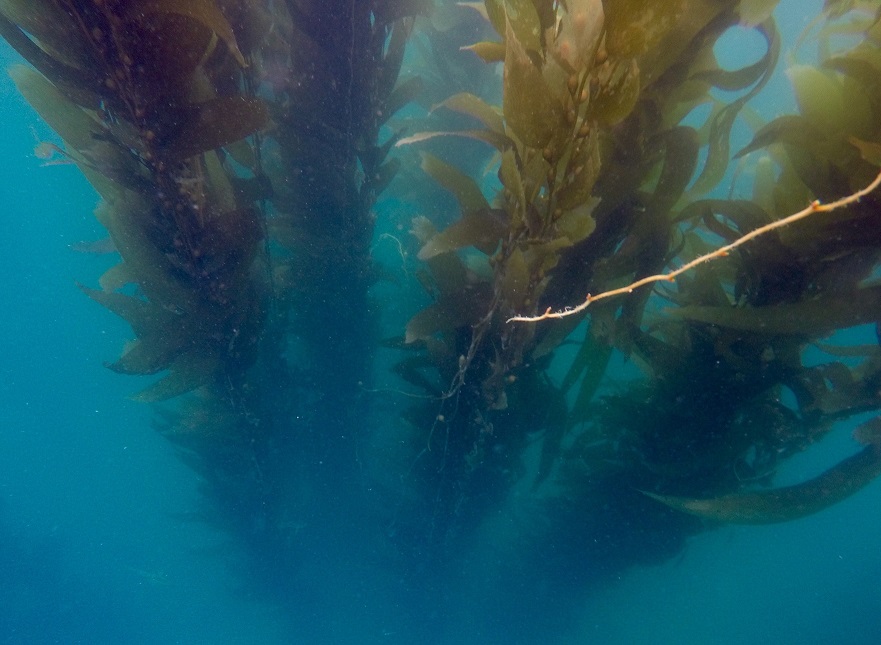While it may look like something out of an alien invasion movie, kelp is a deceptively healthy foundation for any ocean ecosystem. Adorned with slimy green leaves, bulbous heads and tentacle-like stalks, kelp isn’t much to look at. But where it counts — from water filtration to providing a unique habitat for various sea creatures — kelp lends a valuable service to the sea. In desirable coastal locations, efforts to improve water quality have focused on kelp forest growth.
Ocean Acidification
One of the significant problems impacting oceanic climates is acidification. Fossil fuels are notorious for spawning acid rain, which enters the watershed and finds its way into larger bodies of water, and eventually, the ocean. Likewise, the sea absorbs a large percentage of fossil fuel emissions, which also contributes to rising acidity. A more acidic ocean can impact the structural integrity of shelled crustaceans and mollusks, damaging the carbonate with which the shells are built.
Ongoing studies suggest that kelp helps with this problem. As with most sea vegetation, kelp can filter water and absorb carbon dioxide, while emitting beneficial waste products through the process of photosynthesis. With lower carbon levels in the water, it is possible ocean acidity will also decrease. Seaweed can also aid in this process, as it is also a photosynthesizer. While no one is sure whether these efforts will translate into observable outcomes, the research is ongoing.
Algal Blooms
Algal blooms are harmful outcomes of human interaction with the ocean. The process begins with a surplus of oceanic nutrients — primarily phosphorous and nitrogen — which can come from farmland fertilizer, industrial dumping or other sources. Colonies of algae overfed by these nutrients, begin reproducing out of control. What results is a massive colony of algae, which can release toxic by-products or suck up all the oceanic oxygen, suffocating other animals.
Ironically, the best solution for harmful algal blooms might lie in algae. Kelp, an alga itself, is an ideal home to certain bacteria that effectively combat the microalgae populations. Assuming enough of the kelp exists, these bacteria could presumably keep order between the microalgae and the rest of the ecosystem. This is another direction kelp researchers are investigating.
Growing Kelp and Seaweed
Kelp is a reasonably resilient and low-maintenance addition to coastlines. It has few requirements — namely, that the ocean temperature is between 42 and 72 ̊ F, and that the water is clear enough for sunlight to reach the bottom. The second requirement is necessary because kelp begins its growth process as a small alga rooted to the ocean floor and grows rapidly upward from there. A rocky bottom, or another anchor of some kind, is also necessary, as kelp tends to get uprooted from looser floors.
However, with human assistance, kelp can be grown in most places. While there is nothing that can be done about the oceanic temperature, dredging the waters can be extremely effective for clearing the sun to reach the bottom and prevent the spread of contaminants in that water. Removing other vegetation allows for a clear line of sight and unhindered kelp growth, and is often good for cleaning up an ecosystem, regardless.
Unfortunately, dredging is a complex and controversial topic. Although it can provide benefits to removing sediment from seas, marine environments contain fragile ecosystems that may not survive the turbidity and disruption that comes from dredging. This becomes especially risky in areas with coral reefs that have particularly delicate ecosystems that are already threatened by climate change.
Seaweed, for its part, requires even less maintenance. As there are so many different varieties, there will most likely be a native, noninvasive variety for any ecosystem. Seeds and spores can be planted accordingly. Not only does the seaweed provide photosynthesis and a cleaner, less acidic environment, it also helps feed herbivorous wildlife.
A Cleaner Ocean
Environmental science seems to suggest that greater growth of seaweed and kelp can equalize ocean acidity, combat harmful algal blooms, and even feed local wildlife. Their growth and maintenance is fairly simple and can be undertaken on a large, cost-effective scale. With additional research, this method could see substantial use in the near future.

Interesting article. I did cringe when you mentioned dredging as all ecosystems are fragile and going in with big machines doesn’t seem to be the answer as we humans don’t understand all the effects of our actions on nature and all changes have unintended consequences. An interesting note about kelp is that sea otters are known as keepers of the kelp forest since they eat urchins which munch on kelp roots. Sea urchins have been known to uproot whole forests of kelp without this natural predator.
Thanks for your continued informative service, OWT!